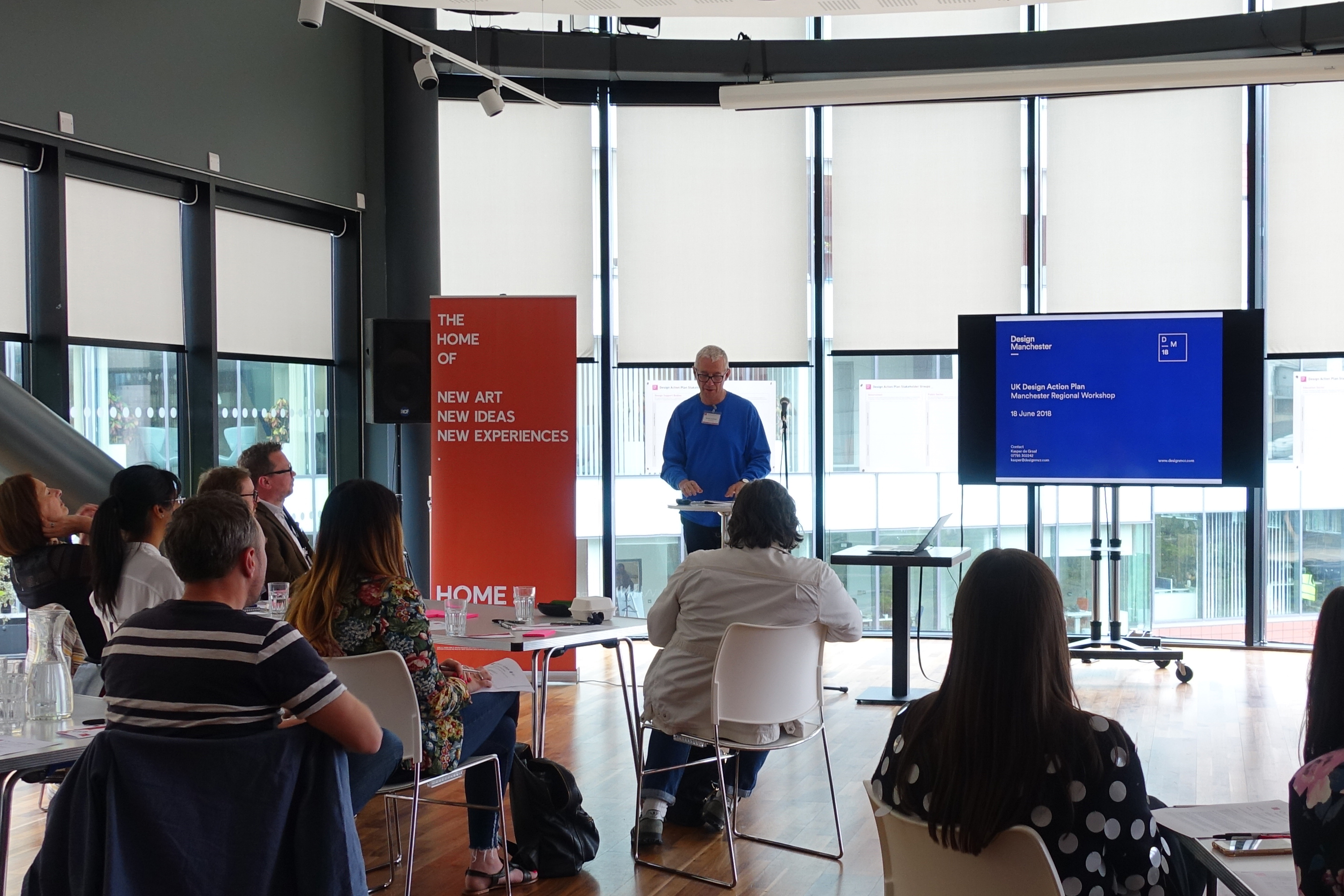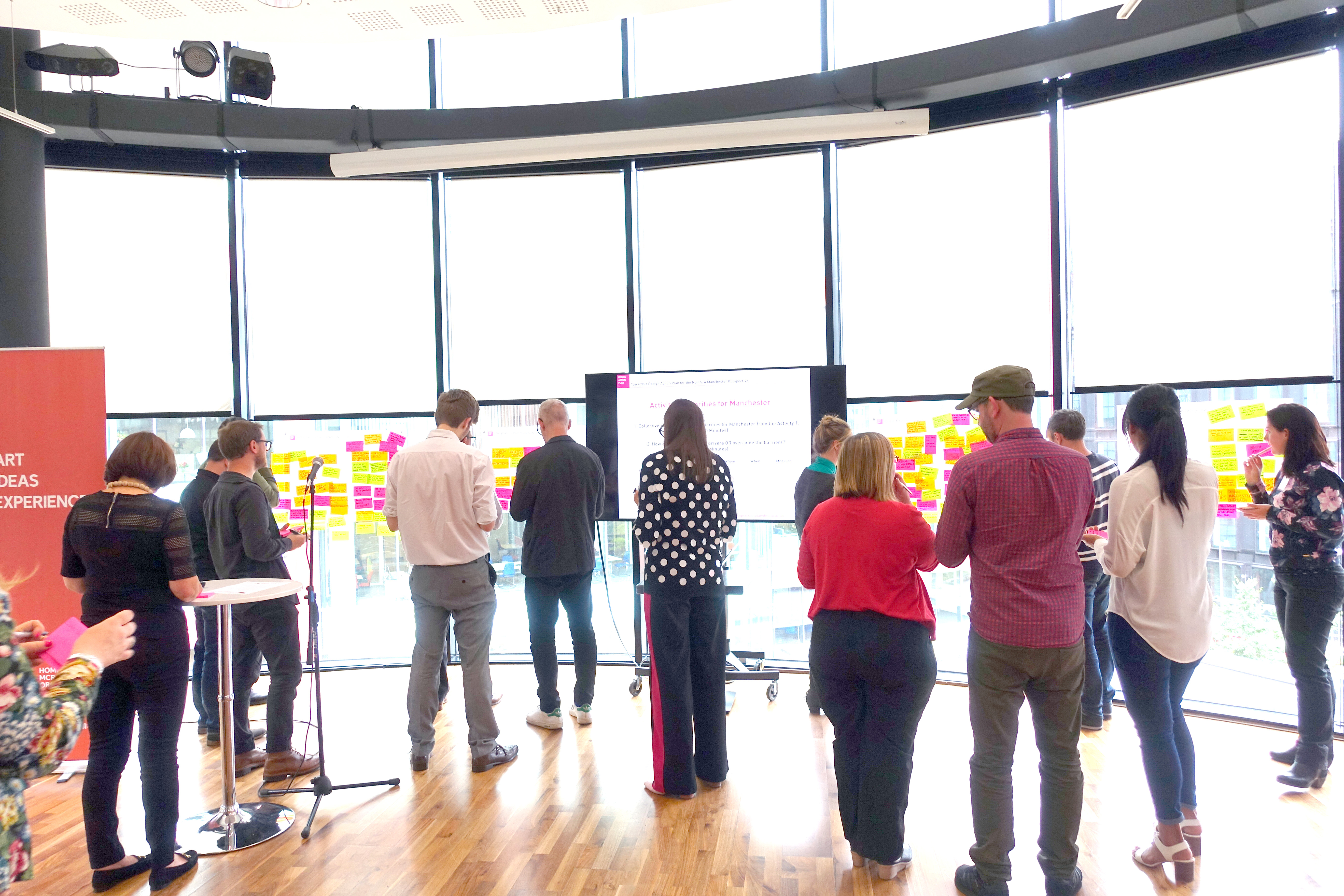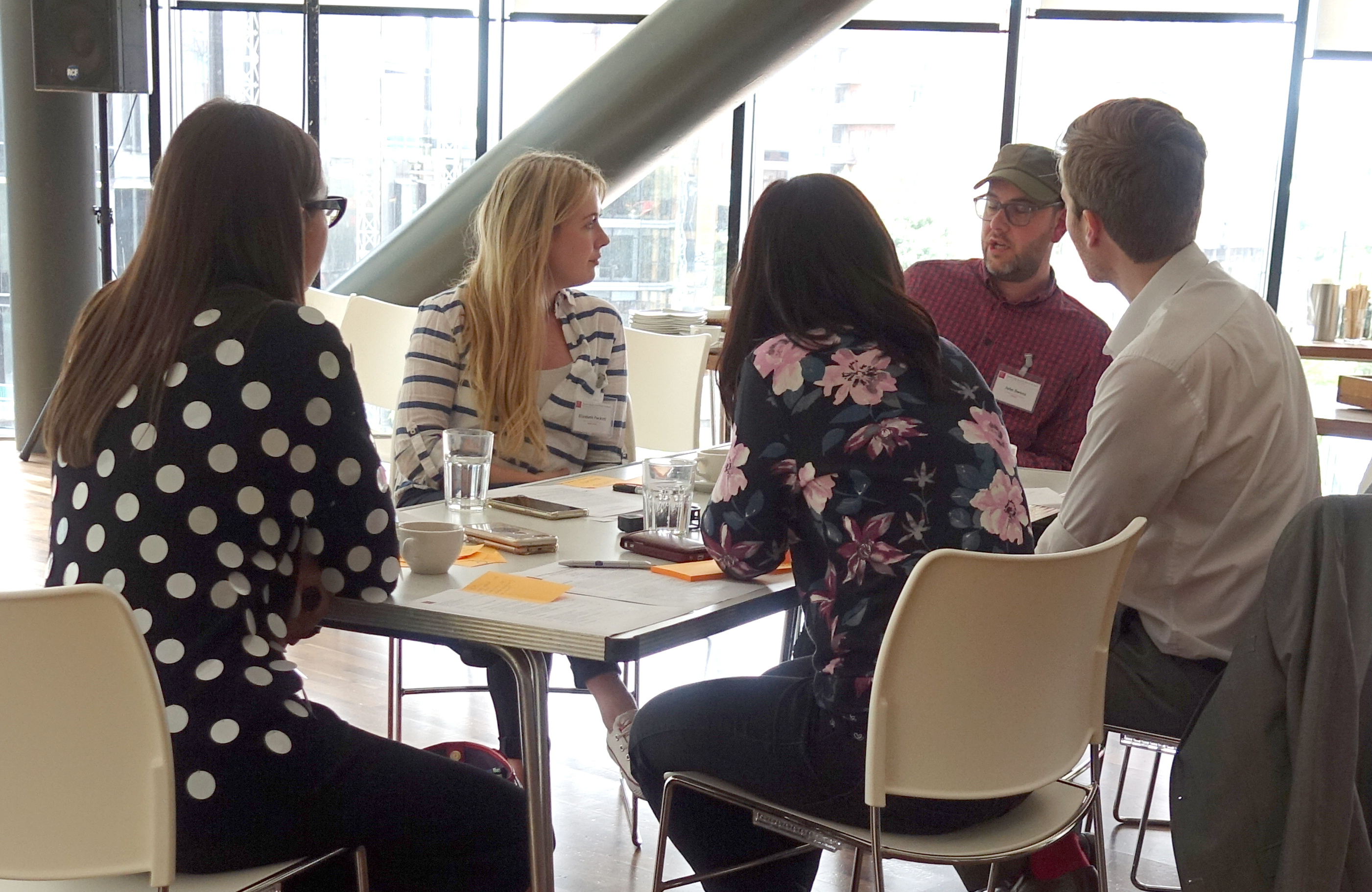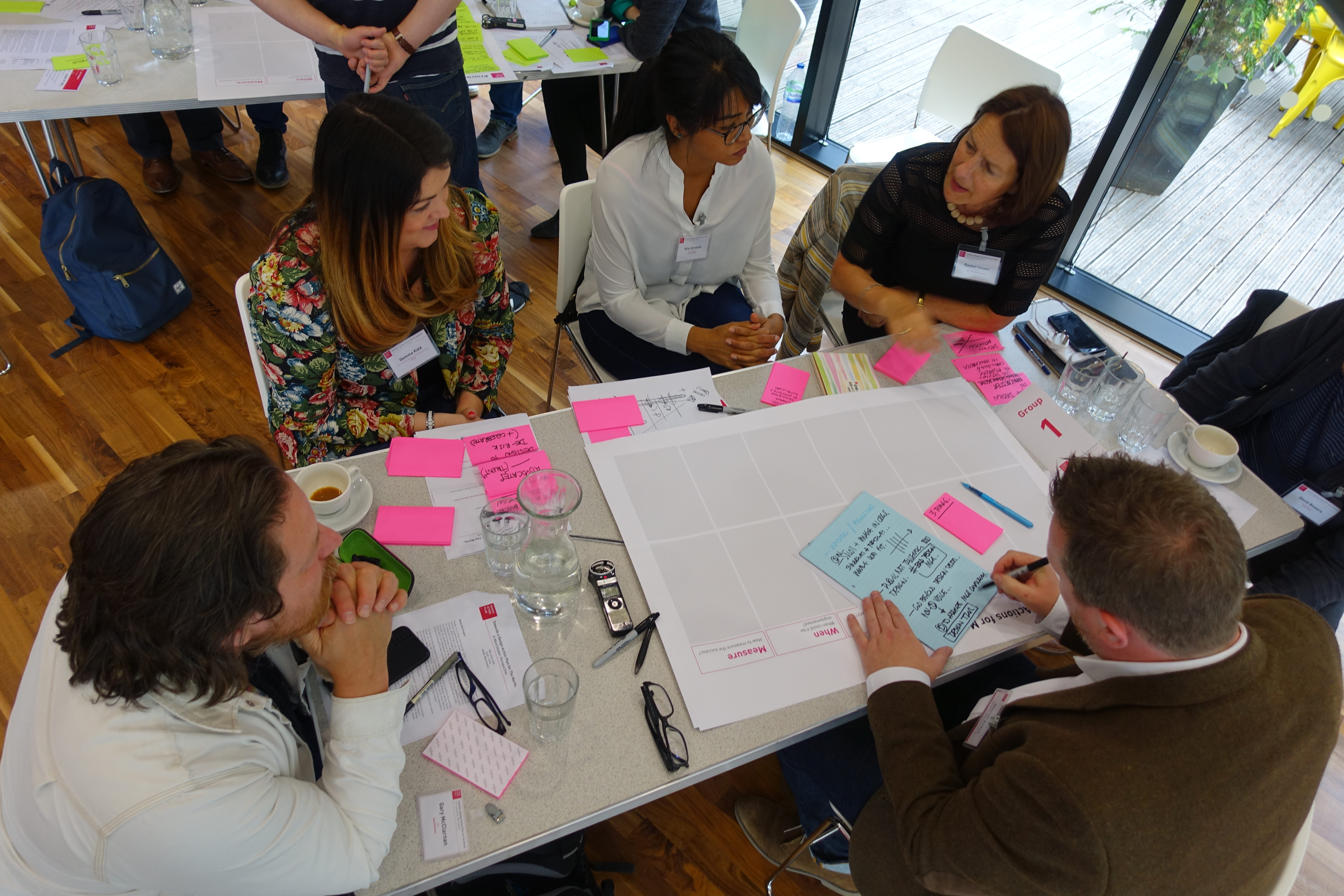
On 18 June, Manchester School of Art, Design Manchester and PDR hosted a participatory workshop to identify the drivers and barriers of strategic use of design in the North, from a Manchester perspective.
The workshop was held at the HOME Manchester with participants from design support bodies, design practitioners, education sector, business (private) sector, government, public sector and the third sector.

Kasper de Graaf from Design Manchester opened the workshop with an introduction of how and why Design Manchester supports the designers and design businesses followed by Martyn Evans’ overview of the project.

The key barrier to the strategic use of design as identified through the workshop was the lack of understanding and awareness of the value of design. The other barriers identified such as the insufficient design education pipeline, lack of communication and promotion, lack of good case study examples and lack of design diversity within organisations etc. are all closely related. Interestingly, there was a sense of self-reflection among design practitioners as a part of the cause of barriers that can be improved to enhance the strategic use of design in Manchester and the North.
In the second part of the Activity 1, the drivers of strategic use of design were discussed which included current as well as potential (and often desired) drivers for Manchester. One of the most discussed drivers was on the education where the highest number of comments was on the “design pipeline improvement” theme. Other drivers included networking and collaboration with other sectors, using the design for more economic and social benefit as well as a process for businesses and public sectors. The discussion included the number of ideas that can be used to enhance the strategic use of design especially for the design support bodies, design practitioners and the education sector.

After completion of Activity 1 – the barriers and drivers to the strategic use of design in the North from a Manchester perspective – the workshop then considered priority actions that would inform a design action plan for Manchester and the surrounding region. The main priorities identified by each group can be divided into two themes. One is to raise the profile of design (Group 1 and 2), and the other is to use design as a key driver for innovation that leads to economic growth (Group 3).
Raising the profile of design for both the public and other sectors was considered important at Manchester workshop. There were many actions discussed to achieve this which are aggregated into core themes including, (i) appointment of a recognisable and dedicated figure to push design agenda forward in government and for the public, (ii) better celebration of design in Manchester through awards and public campaign (iii) engage with the public through creating a Design Experience events and an afterschool design clubs, and (iv) support and fund local design-led innovation projects and ideas.

Creative GVA for Manchester in 2017 is almost £1.5 billion, third highest in the UK (Nesta, 2018). However, the North West has LQ (Location Quotient) value of 0.7 which means the region has 70% less employment in design skills compared to the national average (Design Council, 2018). Also, the failure rate of creative businesses is higher than the national average. A key discussion of the workshop was on having the unified design voice and increasing the awareness of the value of design by providing design experiences across the stakeholder group.
A full report of the workshop will be posted soon.

